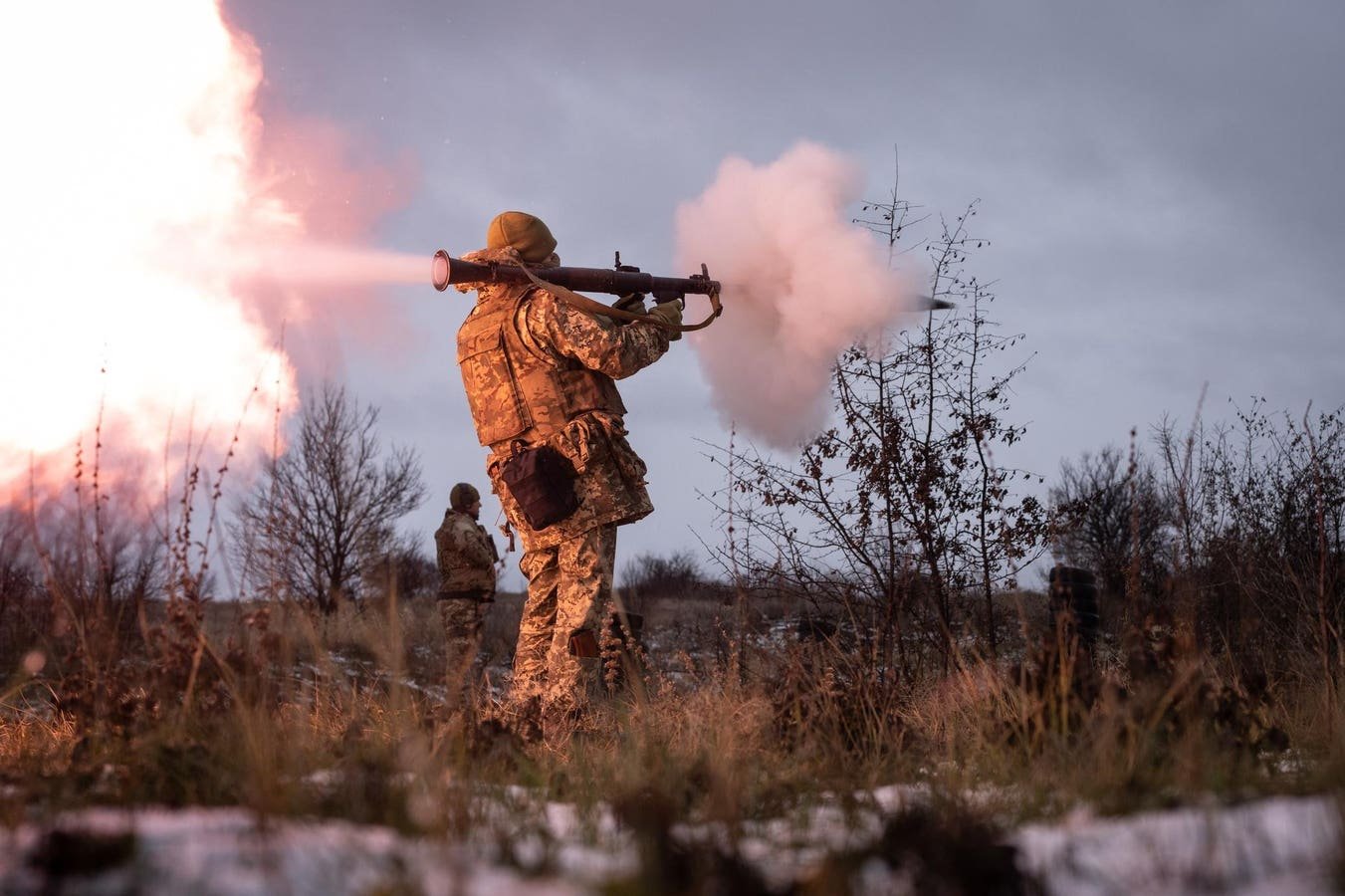DONETSK, UKRAINE – DECEMBER 15: A Ukrainian serviceman of 24th brigade fires a RPG during a training … [+] exercise on December 15, 2024 in Donetsk Oblast, Ukraine. (Photo by Wolfgang Schwan/Anadolu via Getty Images)
Dispatches from Ukraine. Day 1028.
Kherson region. Russian shelling of several municipalities in Kherson oblast, or region, in southern Ukraine left two people dead and six wounded on Dec. 14.
Donetsk region. A Russian artillery attack killed a child in the eastern frontline village of Shevchenko on Dec. 11. Tragically, the child’s family heeded the mandatory evacuation imposed two months ago, but then returned and were in hiding in their home village at the time of the attack. Advancing Russian forces have since captured Shevchenko and are now within two miles of the strategic city of Pokrovsk, a logistics hub for Ukraine’s military.
The Kremlin launched one of its largest airstrikes on Ukraine’s energy infrastructure, firing 94 missiles and nearly 200 drones, on Dec. 13. Ukraine intercepted 81 missiles, including 11 cruise missiles that were downed by F-16 jets, and neutralized 80 drones, while more than 100 others were likely disabled by electronic warfare. The strikes primarily targeted western Ukraine, where more than 50 missiles were shot down; nonetheless, the attack caused widespread power outages and exacerbated rolling blackouts. Russia’s frequent, large-scale missile attacks, occurring approximately every two to three weeks, aim to further cripple Ukraine’s already damaged power grid during the winter months.
Casualties in the Russo-Ukrainian war have surpassed one million since the start of Russia’s full-scale invasion in February 2022, said NATO Secretary-General Mark Rutte during an address in Brussels on Dec. 12. According to Rutte, Moscow has lost around 700,000 troops, and Ukraine suffered 43,000 soldiers killed and 370,000 wounded. He emphasized that the war continues to cause devastating losses, with more than 10,000 casualties weekly, and warned that allies have been slow to respond to Putin’s aggression. He also warned that NATO is unprepared for future threats from Russia, urging increased defense spending and a “shift to a war time mindset.” He noted that Ukraine has allocated 25% of its GDP to defense in 2025, 10 times the average for European allies.
Norway has announced a $240 million package to bolster Ukraine’s maritime defense, including demining, military training, and equipment to counter Russian naval threats in the Black Sea. The funds, part of Norway’s $3.1 billion aid commitment through 2025, will enhance Ukraine’s naval capabilities, including small vessels and mine detection systems. The country also plans to help train Ukrainian pilots on American F-16 jets in Portugal.
The U.S. has announced a $500 million military aid package for Ukraine, including HIMARS long-range rocket launchers and artillery ammunition, anti-drone systems, and anti-tank missiles. Additionally, the U.S. has announced $440 million in economic aid to Ukraine, focused on the agricultural sector and port infrastructure. The package includes $75 million to support export-oriented farming along with $220 million to rebuild transport systems and modernize Black Sea ports. The aid aligns with President Biden’s push to accelerate support, with $7.1 billion remaining to be allocated before his term ends in January, as Ukraine faces a critical need for air defense capabilities, particularly in light of intensified Russian offensives.
A recent survey indicates a significant decrease in the share of Ukrainians who have a favorable view of Poland, dropping from 83% in 2022 to just 41% in 2024. The poll, conducted by a Polish government think-tank, highlights that 53% of Ukrainians now hold a neutral stance toward Poles, with only 4% expressing strong positive feelings. This shift is mainly attributed to protests by Polish farmers against Ukrainian agricultural exports, growing wartime tensions, and Russian propaganda aiming to exploit historical tensions between the two nations.
The European Union has approved its 15th sanctions package against Russia, targeting 54 individuals and 30 entities, including top energy executives and officials linked to child deportations, as well as top North Korean officials. The package sanctions 52 ships used to bypass previous restrictions, as well as the Russian chemical industry and a domestic commercial airline aiding military operations. For the first time, sanctions were also imposed on Chinese companies supplying components for drones and microelectronics for Russia’s war effort, alongside Indian, Iranian, Serbian, and United Arab Emirates firms involved in sanctions evasion. However, many Ukrainian politicians deem these measures insufficient, urging sanctions on Russian LNG (liquified natural gas), imports of which have recently risen in Europe, despite efforts to reduce dependence on Russian energy with the ongoing war.
German Chancellor Olaf Scholz lost a confidence vote in the Bundestag on Dec. 16, triggering early elections on February 23, 2025. The motion passed the German parliament with 394 votes against Scholz and only 207 in favor following the collapse of his coalition in November after a partner, the Free Democratic Party, withdrew. One issue fueling political tensions is Scholz’s refusal to provide Ukraine with Taurus missiles, advanced long-range precision weapons capable of striking targets up to 300 miles away. In comparison, U.S.-supplied ATACMS missiles have a range of only 180 miles. Longer-range missiles are crucial for Ukraine to hit military targets deep within Russian territory. In contrast, one of Scholz’s main political rivals, Friedrich Merz, has taken a stronger stance on supporting Ukraine, including backing the delivery of Taurus missiles.
By Danylo Nosov, Karina L. Tahiliani
